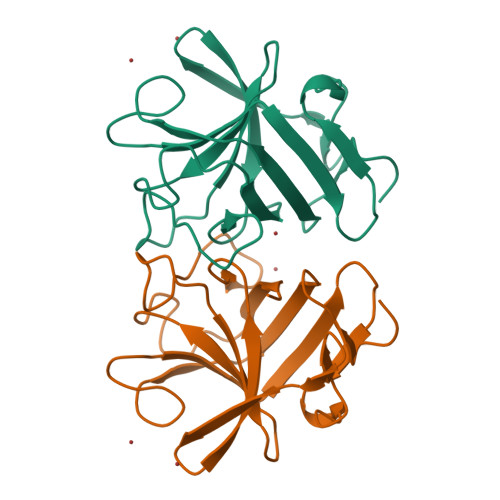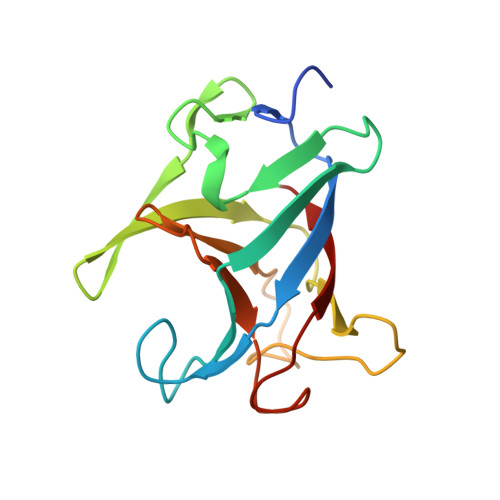Dimerization of hepatitis E virus capsid protein E2s domain is essential for virus-host interaction
Li, S., Tang, X., Seetharaman, J., Yang, C., Gu, Y., Zhang, J., Du, H., Shih, J.W., Hew, C.L., Sivaraman, J., Xia, N.(2009) PLoS Pathog 5: e1000537-e1000537
- PubMed: 19662165
- DOI: https://doi.org/10.1371/journal.ppat.1000537
- Primary Citation of Related Structures:
3GGQ - PubMed Abstract:
Hepatitis E virus (HEV), a non-enveloped, positive-stranded RNA virus, is transmitted in a faecal-oral manner, and causes acute liver diseases in humans. The HEV capsid is made up of capsomeres consisting of homodimers of a single structural capsid protein forming the virus shell. These dimers are believed to protrude from the viral surface and to interact with host cells to initiate infection. To date, no structural information is available for any of the HEV proteins. Here, we report for the first time the crystal structure of the HEV capsid protein domain E2s, a protruding domain, together with functional studies to illustrate that this domain forms a tight homodimer and that this dimerization is essential for HEV-host interactions. In addition, we also show that the neutralizing antibody recognition site of HEV is located on the E2s domain. Our study will aid in the development of vaccines and, subsequently, specific inhibitors for HEV.
Organizational Affiliation:
National Institute of Diagnostics and Vaccine Development in Infectious Disease, School of Life Sciences, Xiamen University, Xiamen, China.



















